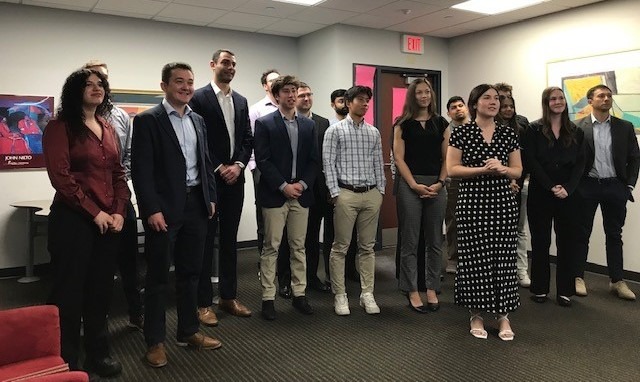Every spring semester, Risk Management and Insurance (RMI) MBAs have the opportunity to work on an applied learning project with a corporation to help them launch an initiative, revamp a product, or better understand their business. As part of our spring project, we invite a select group of undergraduate students from a variety of degrees and programs to bring their expertise and perspective and work together with MBA students. This semester, we had the tremendous opportunity to work with Zillow Group to help them better understand their risk universe, their risk appetite, and how to effectively engage with risk to keep them on strategy and move them closer to accomplishing their mission.
Christy Kaufman, a two-time Wisconsin alumna and the Vice President of Risk Management and Insurance Services at Zillow, was our point of contact and project lead. Christy asked us to develop a framework and methodology to help Zillow understand its risk at the individual business unit level, communicate those risks across business units, and develop a company-wide aggregate risk appetite framework that would help inform the firm’s strategic decision-making. This was no easy task and one that challenged us to develop a deeper understanding of risk and risk management.
With the help of our talented undergraduates, our driven project lead Madison Wescott, and guidance from RMI director Joan Schmit, we were able to deliver a risk appetite framework for Zillow to use. Our method focused on breaking down the total cost of risk for each of Zillow’s risk pillars, or business units, by tracking the cost metrics associated with risk events impacting those business units. The total cost of risk for each risk pillar, in conjunction with historical data and theoretical data, could be used to create an aggregate risk appetite distribution for the company.
From this aggregate distribution reflecting all the potential costs for Zillow across their business units, they could select a level of risk they’d like to engage with. At the core of this model is the understanding that engaging certain risks, if we can understand their costs and how they correlate with other business decisions, will help Zillow achieve its goals.
At the end of the semester, we presented our work and our recommendations to Zillow. This was a great opportunity to practice our presentation skills and deliver an actionable product and methodology to a major corporation. The applied learning projects we do at the Wisconsin School of Business are a unique way to do that and so much more. The projects are certainly a way to connect with real-world business leaders, apply what we have learned in our courses outside of the classroom, and experience what working on a project for a firm would be like.
Beyond that, as MBAs we develop our leadership skills by managing a team of undergraduate students, we hone our communication skills in our weekly meetings and presentations, and we enhance our time management efficacy as we balance the needs of the project with our other coursework.
For the RMI MBAs, the applied learning projects offer an unparalleled way to practice the skills we will need when we enter the workforce, allowing us to apply our different academic and professional backgrounds, our current coursework, and our leadership skills to a real-world project for a dynamic company. This is one of the many ways the Wisconsin MBA experience has shaped my development as a student and has prepared me to be trusted to lead.
